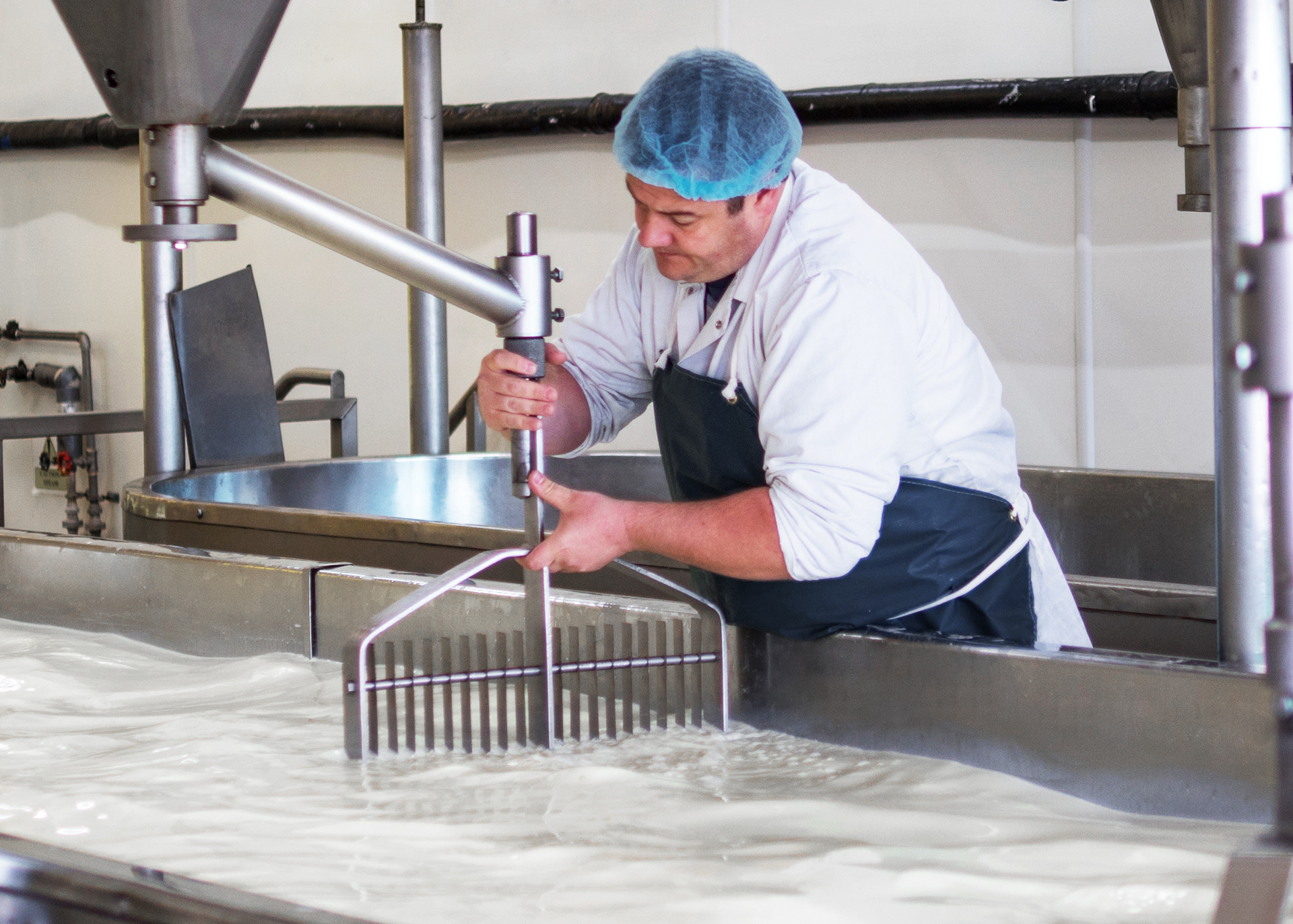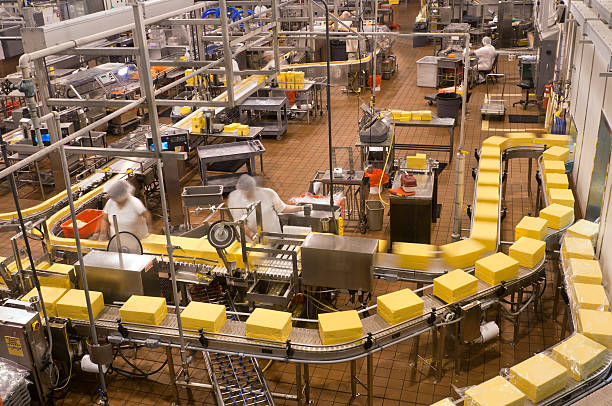Checking Out the Art of Cheese Production: Strategies, Processes, and Developments in the Dairy Products Market
The expedition of cheese manufacturing encompasses a varied variety of strategies and processes that show both historical customs and contemporary developments within the dairy products industry. By analyzing the intricate art of fermentation, aging, and modern-day manufacturing methods, one gains understanding into exactly how craftsmens and large-scale manufacturers alike adapt to developing consumer choices and sustainability obstacles. As we consider the effects of these advancements, it becomes important to examine just how they will certainly form the future landscape of cheese and its function in our diet regimens and culinary techniques.
Background of Cheese Making
Tracing its origins to ancient civilizations, the background of cheese making exposes an abundant tapestry of cultural and technical advancement. Proof suggests that cheese manufacturing go back over 7,000 years, with archaeological searchings for from regions such as Mesopotamia and the Indus Valley showcasing early dairy practices. These societies used milk from tamed pets, and via natural procedures of fermentation and curdling, they produced simple types of cheese.
As people advanced, the art of cheese making came to be more fine-tuned. The old Egyptians and Greeks documented their methods, which included a range of milk sources and diverse methods for aging and flavor cheese. The Romans further advanced cheese production, exporting their understanding across Europe, which caused regional adjustments and distinct ranges.
The Center Ages saw the facility of abbeys as facilities of cheese production, where monks established distinct dishes that reflected neighborhood preferences and offered resources. Throughout the centuries, cheese making has actually advanced, influenced by factors such as geography, environment, and social techniques. This abundant history not just illustrates the ingenuity of very early cultures yet likewise lays the structure for the varied cheese ranges appreciated today around the world.
Typical Cheese Manufacturing Strategies
Conventional cheese manufacturing strategies encompass a selection of time-honored methods that have been given with generations. These strategies, often region-specific, reflect the special cultural heritage related to cheese-making. The process typically begins with sourcing high-grade milk, which can vary in kind depending upon the desired cheese.
Coagulation is accomplished via the addition of rennet and in some cases an acid, bring about the formation of curds. The curds are after that reduced and carefully mixed, enabling whey to separate. This first curdling phase is crucial, as it influences the structure and dampness web content of the end product.

Fermentation and Aging Processes
Fermentation and aging procedures are integral to the growth of cheese, happening after the preliminary coagulation and pressing phases. During fermentation, particular microbial societies are presented to the curds, promoting the conversion of lactose into lactic acid. This level of acidity not only helps in curd preservation but likewise adds to the taste account and texture of the final product.
As celebrity ages, biochemical reactions remain to happen, affecting its preference, fragrance, and appearance. Enzymes and microorganisms break down proteins and fats, resulting in the development of intricate flavors. The aging atmosphere, including temperature and humidity, plays an important role in this growth process. Different cheeses require varying aging periods, which can range from a couple of weeks to numerous years, resulting in distinctive features.
Moreover, the visibility of mold and mildews or yeasts on celebrity surface can even more improve taste complexity. For example, blue cheeses rely on specific mold and mildew societies to produce their trademark preference accounts. Generally, both fermentation and aging are essential in defining the originality of cheeses, enabling craftsmens to produce a diverse selection of products that cater to a wide variety of tastes.
Modern Technologies in Milk Production
Technologies in dairy products production have revolutionized the cheese-making process, improving performance and product top quality. Technological developments, such as automated bleeding systems and precision fermentation techniques, have structured operations and enhanced consistency in raw milk high quality. These systems reduce labor prices and boost animal well-being by permitting for even more comfy and effective bleeding methods.
Moreover, the unification of data analytics and IoT (Web of Things) tools has allowed dairy products producers to keep an eye on various parameters, such as temperature and humidity, in real-time. cheese store melbourne. This capability makes sure optimal conditions throughout the cheese-making process, leading to a greater top quality end product
Furthermore, advancements in pasteurization techniques, consisting of high-temperature short-time (HTST) pasteurization, have not just enhanced food safety and security but also preserved the delicate flavors and nutrients intrinsic in milk.
Sustainable methods are likewise gaining grip, with improvements in waste administration and renewable resource application. Many producers are now harnessing biogas from milk waste, advertising environmental stewardship while all at once reducing operational prices.
These modern technologies collectively contribute to a more efficient, sustainable, and top notch cheese manufacturing procedure, setting new requirements in the dairy products sector.
Future Patterns in Cheese Market
As celebrity sector continues to progress, emerging fads are reshaping manufacturing, usage, and advertising and marketing approaches. One significant fad is the growing demand for artisanal and specialty cheeses, driven by customers looking for unique tastes and top quality ingredients. This shift is urging manufacturers to embrace typical approaches while integrating modern-day innovation for enhanced high quality control.
Sustainability remains at the forefront of customer choices, triggering makers to discover environmentally friendly practices, such as minimizing water use, maximizing energy consumption, and using biodegradable product packaging products. Furthermore, technologies in plant-based cheese alternatives are expanding market opportunities, accommodating the enhancing number of vegan and lactose-intolerant consumers.
Furthermore, digital advertising and shopping are transforming just how cheese is marketed and marketed, making it possible for manufacturers to attach directly with customers and customize their offerings to certain demographics. Membership solutions and on-line systems are becoming prominent networks for cheese distribution, enhancing accessibility and ease.
Last but not least, health-conscious patterns are affecting cheese formulas, with manufacturers developing lower-fat, lower-sodium, and nutrient-enriched options to fulfill customer needs. As these fads remain to unfold, the cheese sector is most likely to witness a vibrant makeover that lines up with contemporary consumer values and choices.

Conclusion
The expedition of cheese manufacturing reveals a complex interaction of classic strategies and contemporary developments. Standard approaches, rooted in historic methods, remain to influence modern-day production while adjusting to evolving customer choices. Fermentation and aging procedures continue to be important to taste growth, while advancements in innovation improve performance and sustainability. As the dairy industry embraces health-conscious trends and environment-friendly practices, the future of cheese manufacturing assures continued development and advancement, ensuring its long-lasting cheese factory melbourne relevance in cooking culture.
 Dylan and Cole Sprouse Then & Now!
Dylan and Cole Sprouse Then & Now! Josh Saviano Then & Now!
Josh Saviano Then & Now! Ross Bagley Then & Now!
Ross Bagley Then & Now! Burke Ramsey Then & Now!
Burke Ramsey Then & Now! Kane Then & Now!
Kane Then & Now!